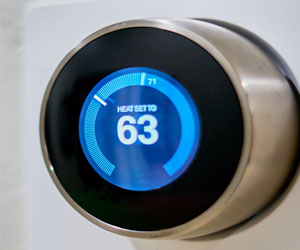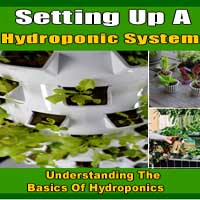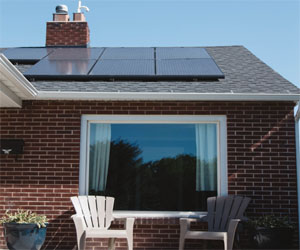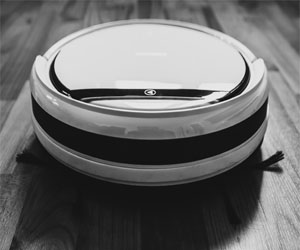


A Fundamental Right And Social Imperative

Affordable housing is a topic of universal significance, transcending geographical and cultural boundaries. It is not merely a matter of providing shelter; it is a fundamental human right and a cornerstone of any thriving, equitable society. In an era where urbanization is on the rise and economic disparities continue to widen, the need for affordable housing solutions has never been more pressing.
Affordable housing is, at its essence, the provision of decent, secure, and reasonably priced housing options to individuals and families with various income levels. It ensures that people have access to homes that do not consume an unmanageable portion of their income, allowing them to meet other basic needs, save for the future, and enjoy an acceptable standard of living.
One of the critical challenges in addressing affordable housing is the ever-increasing demand. As more people move to urban centers in search of better economic opportunities, housing markets become strained. Limited supply and increasing demand often result in skyrocketing housing prices, pushing the cost of living beyond the means of many.
The consequences of unaffordable housing are far-reaching. Families are forced to live in overcrowded and substandard conditions, leading to health issues and reduced quality of life. Homelessness becomes a tragic reality for some, further exacerbating social problems. Moreover, the lack of affordable housing can perpetuate cycles of poverty, as families are left with limited resources for education, healthcare, and other essential services.
Affordable housing solutions are not only vital for individuals and families; they also have broader social and economic implications. Access to affordable housing can improve community stability, enhance economic mobility, and reduce the burden on social welfare programs. By ensuring that everyone has a place to call home, we create the foundation for stronger, more inclusive societies.
To address the affordable housing crisis, various approaches and strategies are being employed around the world. Government subsidies, tax incentives, and grants can stimulate the construction of affordable housing units. Public-private partnerships are another effective way to harness the resources and expertise of both sectors. Community land trusts and co-housing initiatives offer innovative models for affordable housing, empowering communities to take ownership of their housing solutions.
Additionally, sustainable and environmentally friendly design practices are increasingly being integrated into affordable housing projects. This not only reduces the ecological footprint of these developments but also lowers long-term energy costs for residents, making housing even more affordable.
The fight for affordable housing is not without its challenges. Land costs, construction expenses, and the availability of resources are significant factors that can hinder progress. However, the benefits of affordable housing are undeniable. When individuals and families have access to safe and affordable homes, they are better equipped to pursue education, secure stable employment, and invest in their communities.
Affordable housing is a fundamental right and a social imperative. It is essential to address the widening disparities in our society and create communities where everyone has the opportunity to thrive. While challenges exist, the commitment to affordable housing remains a driving force behind innovative solutions that aim to provide secure, affordable, and dignified homes for all. By working collectively, we can build a world where affordable housing is not a luxury but a fundamental cornerstone of a just and equitable society.
A Smarter Way To Control Your Comfort
 How Intelligent Thermostats Work
How Intelligent Thermostats Work
Intelligent thermostats are a significant departure from traditional thermostats. They leverage advanced technology, including sensors, Wi-Fi connectivity, and machine learning algorithms, to provide precise and customizable control over your home's heating and cooling systems. These thermostats gather data about your preferences, daily routines, and the current conditions inside and outside your home. With this information, they can automatically adjust the temperature to create a comfortable and energy-efficient environment.
Benefits Of Intelligent Thermostats
Energy Efficiency: One of the primary benefits of intelligent thermostats is their ability to save energy and reduce utility costs. By learning your temperature preferences and adapting to your schedule, these devices can optimize heating and cooling, preventing unnecessary energy consumption.
Customized Comfort: Intelligent thermostats allow you to set personalized schedules and temperature preferences for different times of the day and week. You can ensure that your home is warm in the morning and cooler at night, all without manual adjustments.
Remote Control: Most intelligent thermostats are Wi-Fi enabled, giving you the power to control your home's temperature remotely through smartphone apps or web interfaces. This feature is especially useful when you're away from home and want to ensure it's comfortable upon your return.
Learning Capabilities: Over time, intelligent thermostats adapt to your lifestyle. They learn when you're typically at home and when you're not, making automatic adjustments to save energy without sacrificing your comfort.






A Bright Path To Sustainable Energy
 The Solar Journey
The Solar Journey
Going solar involves harnessing the sun's abundant energy through the installation of photovoltaic (PV) solar panels on your property, typically the roof of your home. The process is both exciting and straightforward:
Assessment: The journey begins with a thorough assessment of your property's suitability for solar panels. Factors such as sunlight exposure, shading, and the condition of your roof are taken into account to determine the best solar solution for your needs.
Design And Planning: Once the assessment is complete, a customized solar system design is created. This design takes into consideration your energy requirements and the available space for solar panels.
Permitting: Before installation can commence, you'll need to secure necessary permits and approvals from local authorities. Your solar installation provider will assist you with this essential step.
Installation: The solar panels and related equipment, such as inverters and mounting systems, are professionally installed on your property. These panels are strategically placed to maximize exposure to sunlight.
Connection To The Grid: In many cases, residential solar systems are connected to the energy grid. This connection enables excess energy to be sent back to the grid, often earning you credits or compensation.
Testing And Inspection: After installation, the system undergoes thorough testing to ensure it is functioning correctly. Inspections may also be conducted to verify compliance with local regulations.
Shaping Spaces For Comfort And Functionality
 Functional Layout: An effective housing design starts with a well-thought-out floor plan. It considers the practical needs of residents, from the number of bedrooms and bathrooms to the placement of the kitchen and living areas. An efficient layout maximizes space utilization and minimizes wasted square footage.
Functional Layout: An effective housing design starts with a well-thought-out floor plan. It considers the practical needs of residents, from the number of bedrooms and bathrooms to the placement of the kitchen and living areas. An efficient layout maximizes space utilization and minimizes wasted square footage.
Aesthetics: While functionality is paramount, aesthetics are equally important. Aesthetically pleasing design can enhance the quality of life for residents. The choice of materials, colors, and architectural elements can create a sense of comfort, style, and identity within the home.
Sustainability: Sustainable housing design is on the rise, driven by a growing awareness of environmental concerns. Green building practices focus on using eco-friendly materials, energy-efficient technologies, and renewable energy sources to minimize the carbon footprint of a home.
Adaptability: Housing design should be flexible and adaptable to accommodate the changing needs of its inhabitants. This is particularly important in a world where the dynamics of families and lifestyles evolve over time. Features like convertible spaces and modular furniture are becoming more popular.
Accessibility: Accessibility is a critical aspect of housing design. It ensures that homes can be comfortably and safely used by people of all ages and abilities. Features like wider doorways, no-step entries, and accessible bathroom and kitchen designs are integral to inclusive housing.
Natural Light And Ventilation: Designers are increasingly focusing on maximizing natural light and ventilation in homes. Well-placed windows and open floor plans can significantly improve the quality of life for residents while reducing the need for artificial lighting and climate control.
Cultivating Your Green Thumb
 Choose The Right Location: select a location that receives adequate sunlight for the plants you want to grow. Most vegetables and flowers require at least 6 hours of direct sunlight per day. If you have limited sun exposure, consider shade-tolerant plants like hostas or ferns.
Choose The Right Location: select a location that receives adequate sunlight for the plants you want to grow. Most vegetables and flowers require at least 6 hours of direct sunlight per day. If you have limited sun exposure, consider shade-tolerant plants like hostas or ferns.
Select Easy-To-Grow Plants: As a beginner, it's wise to start with plants that are known for their resilience and forgiving nature. Some easy-to-grow choices include tomatoes, basil, marigolds, and zinnias. These plants are relatively low-maintenance and can be quite forgiving of minor mistakes.
Quality Soil Is Key: Healthy soil is the foundation of a successful garden. Invest in good-quality potting mix or amend your garden soil with organic matter like compost to improve its fertility and structure.
Learn About Watering: Overwatering and underwatering are common mistakes for beginners. Research the specific watering needs of your plants. Most plants prefer even, consistent moisture, but some drought-tolerant varieties may require less frequent watering.
Gardening Tools: Acquire a few essential gardening tools, including a trowel, hand pruners, a watering can or hose, and gardening gloves. These tools will make your gardening tasks much easier.
Garden Maintenance: Regular garden maintenance includes weeding, deadheading (removing spent flowers), and pruning. These tasks help keep your garden looking tidy and encourage healthy growth.
Revolutionizing Cleaning For A Sustainable Future
 3. Eco-Friendly Packaging
3. Eco-Friendly Packaging
Green cleaning isn't limited to the contents of the cleaning products but also extends to the packaging. Innovations in packaging include the use of recycled and biodegradable materials, as well as more efficient and space-saving packaging to reduce transportation costs and emissions.
4. Smart Cleaning Appliances
Smart cleaning appliances equipped with sensors and AI technology are making cleaning more efficient and eco-friendly. These devices can optimize cleaning routines, minimizing resource waste by adjusting water usage, detergents, and energy consumption based on the specific cleaning needs. For example, robotic vacuum cleaners can map out your home and clean only the areas that need attention, saving both time and energy.
5. Waterless Cleaning Technologies
Waterless cleaning innovations are revolutionizing the way we think about cleaning tasks that traditionally require large amounts of water. Dry steam cleaning, for example, uses superheated steam to clean and sanitize surfaces without the need for chemicals or excessive water usage. These methods are not only more environmentally friendly but also more efficient.
6. Sustainable Cleaning Pads
Innovative cleaning pads made from sustainable materials like bamboo or recycled fibers are not only effective at capturing dirt and dust but are also biodegradable. They offer a green alternative to disposable cleaning pads that contribute to waste and pollution.
7. Chemical-Free Electrolyzed Water Cleaners
Some cleaning appliances now generate electrolyzed water on the spot by passing an electric current through a mixture of water and salt. This creates a powerful, non-toxic cleaning solution that effectively sanitizes surfaces, eliminating the need for chemical cleaning agents.
Benefits Of Green Cleaning Innovations
Improved Indoor Air Quality: Green cleaning innovations typically reduce the release of volatile organic compounds (VOCs) and harmful chemicals, leading to better indoor air quality and improved respiratory health.